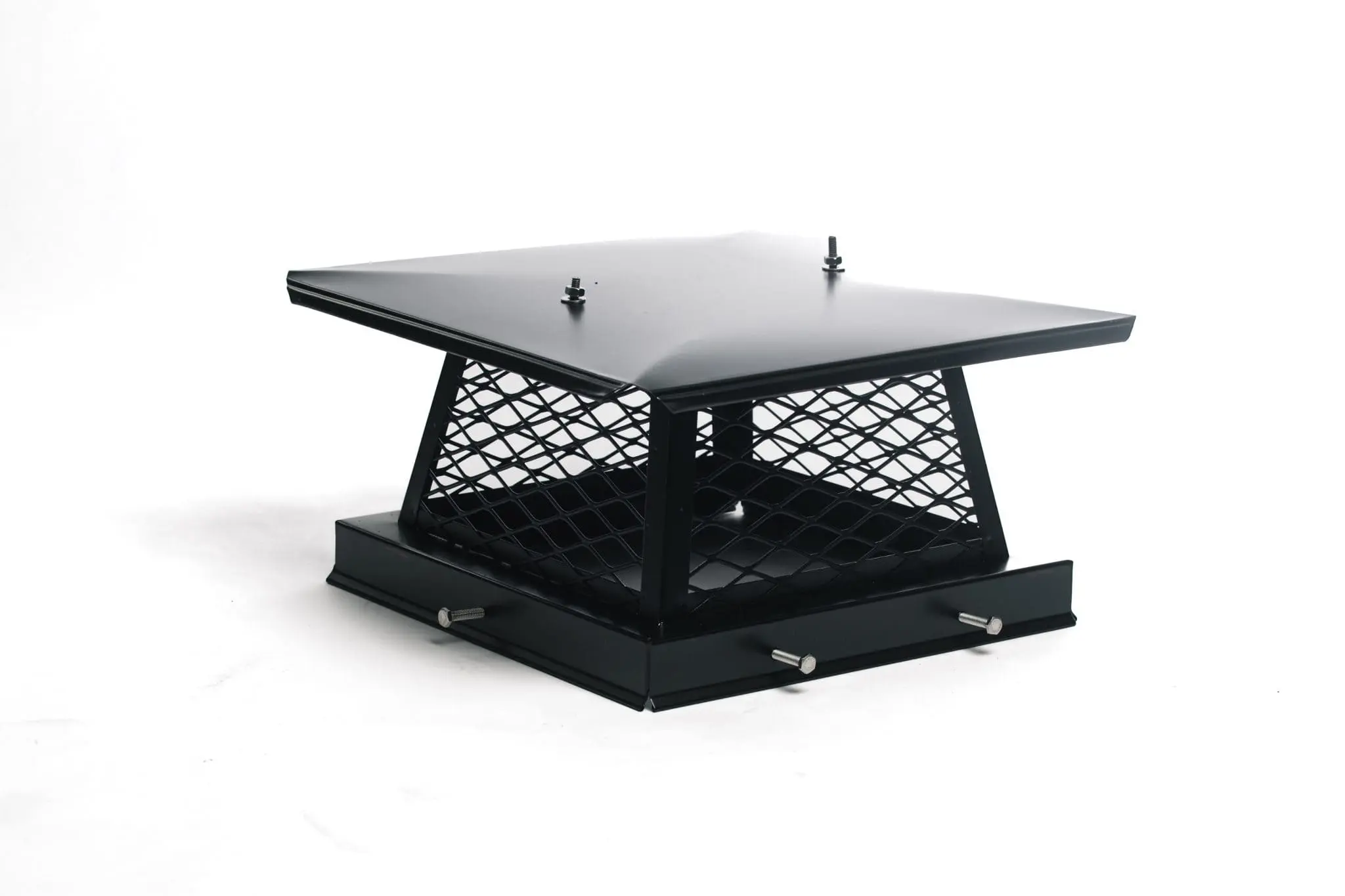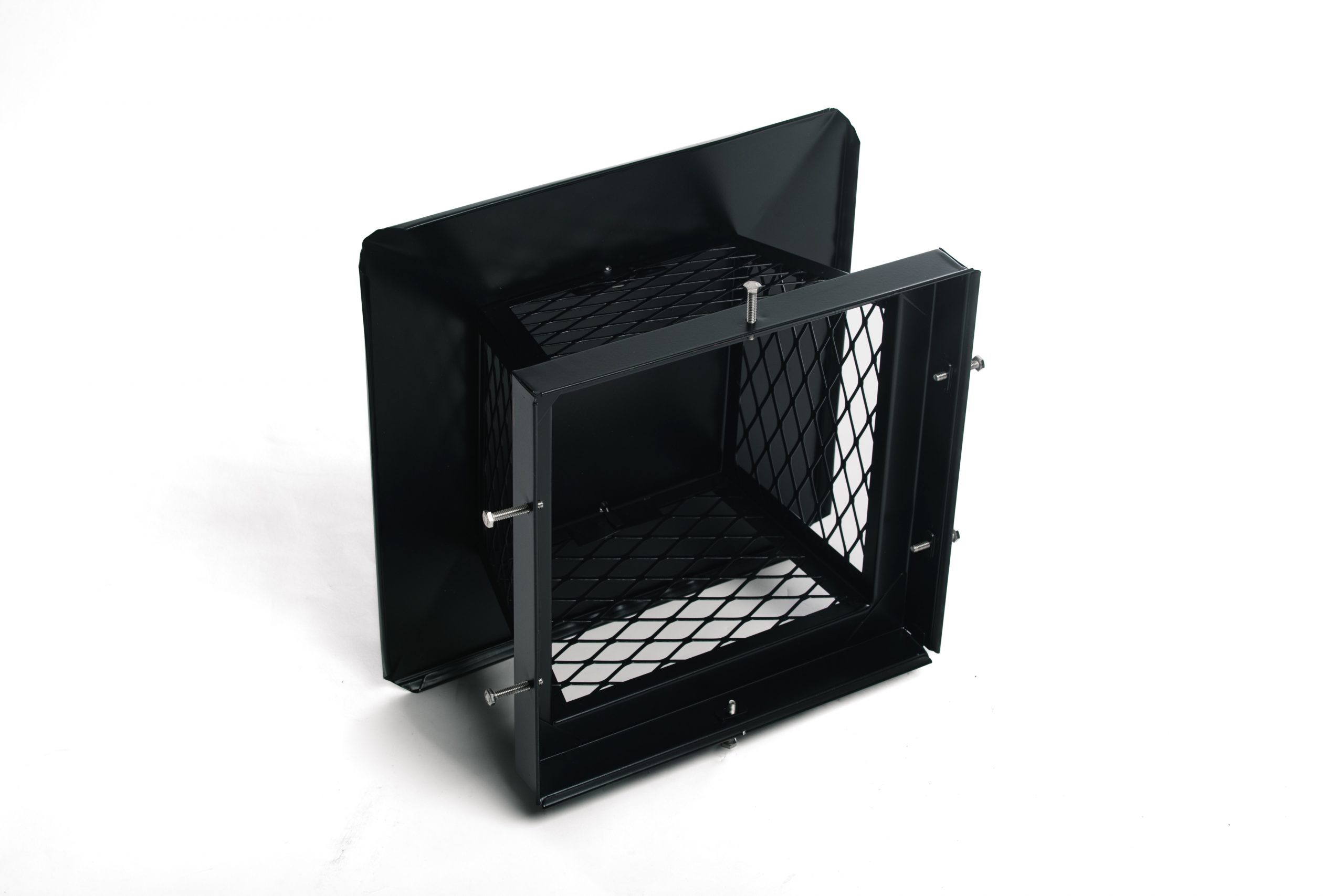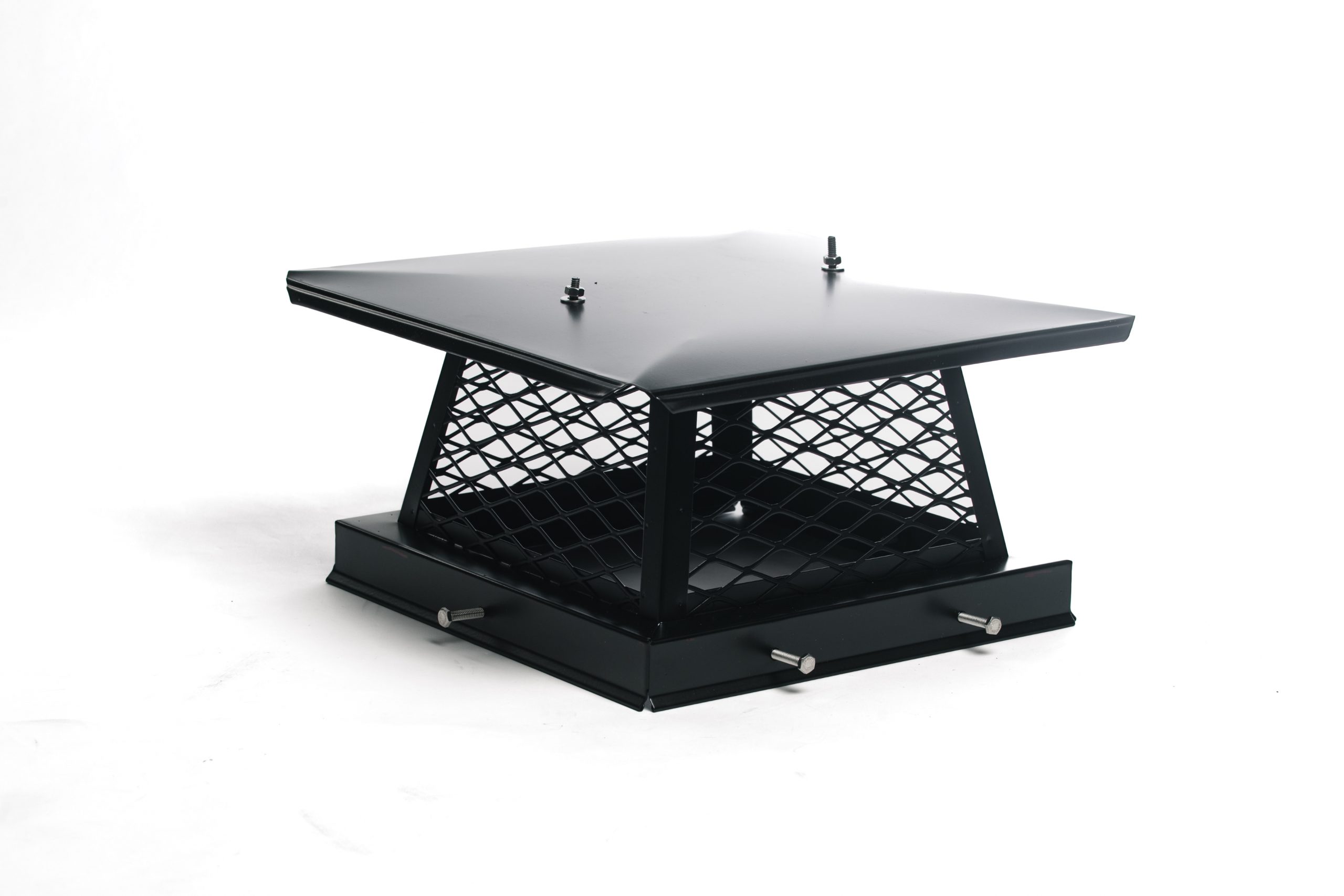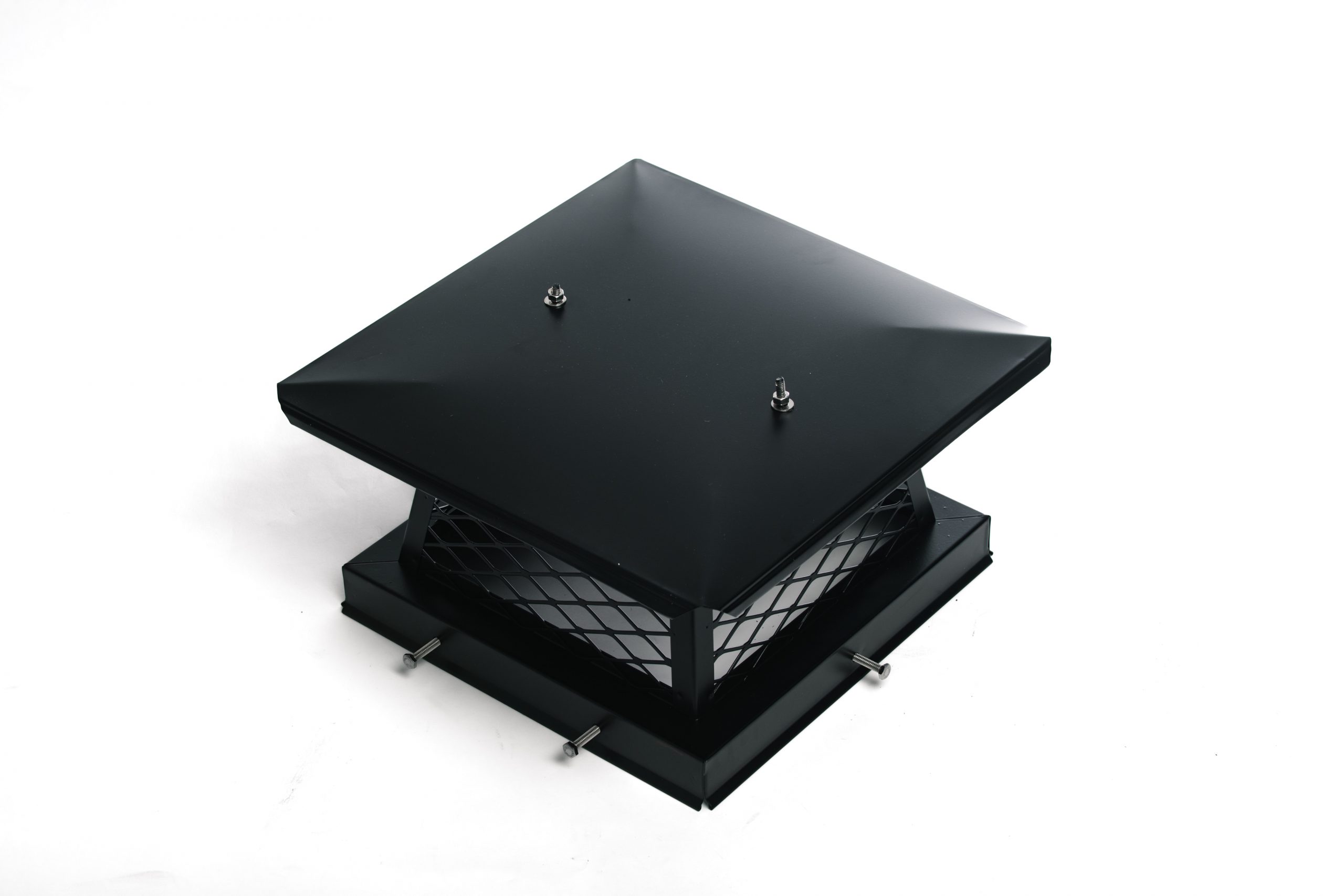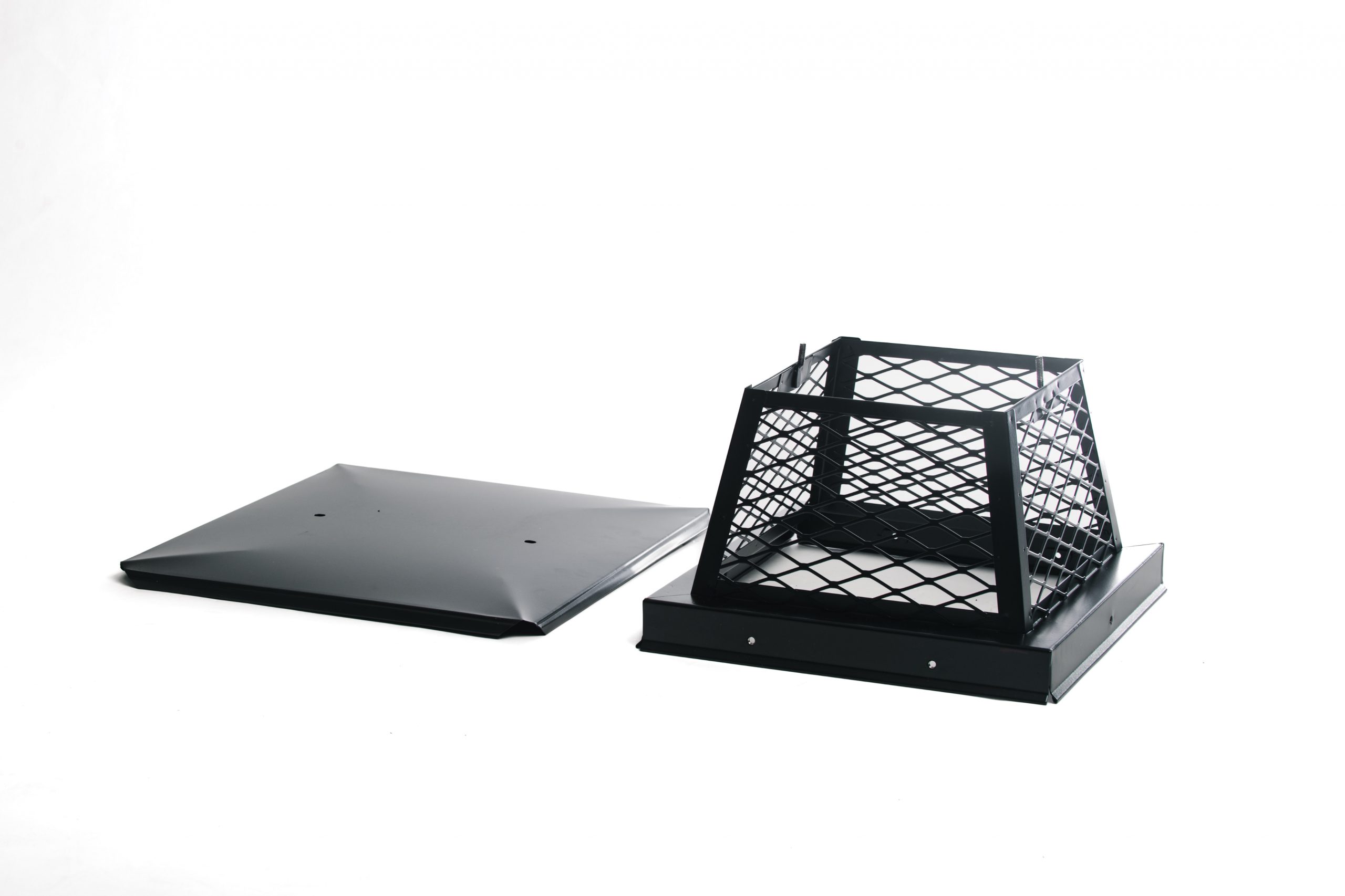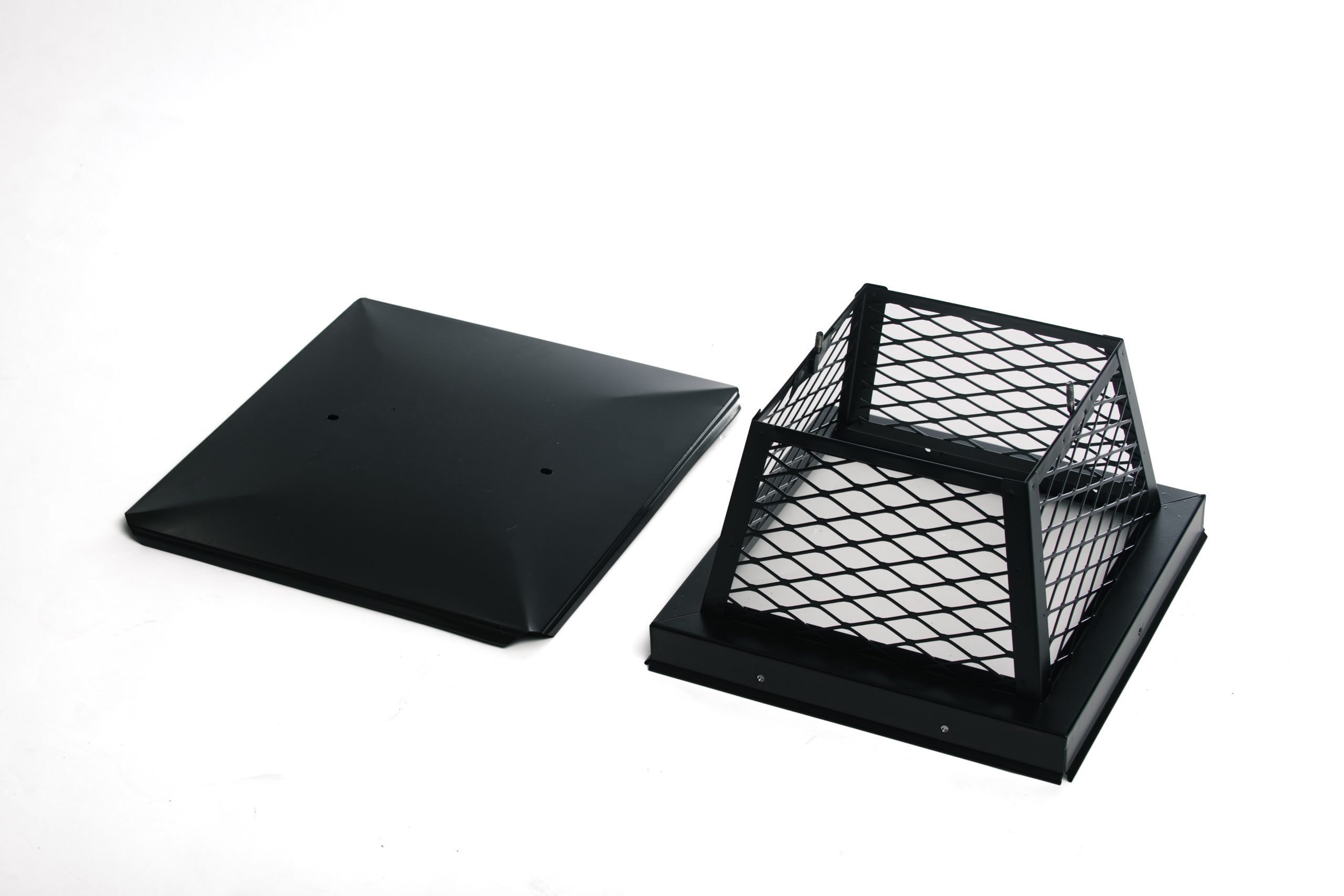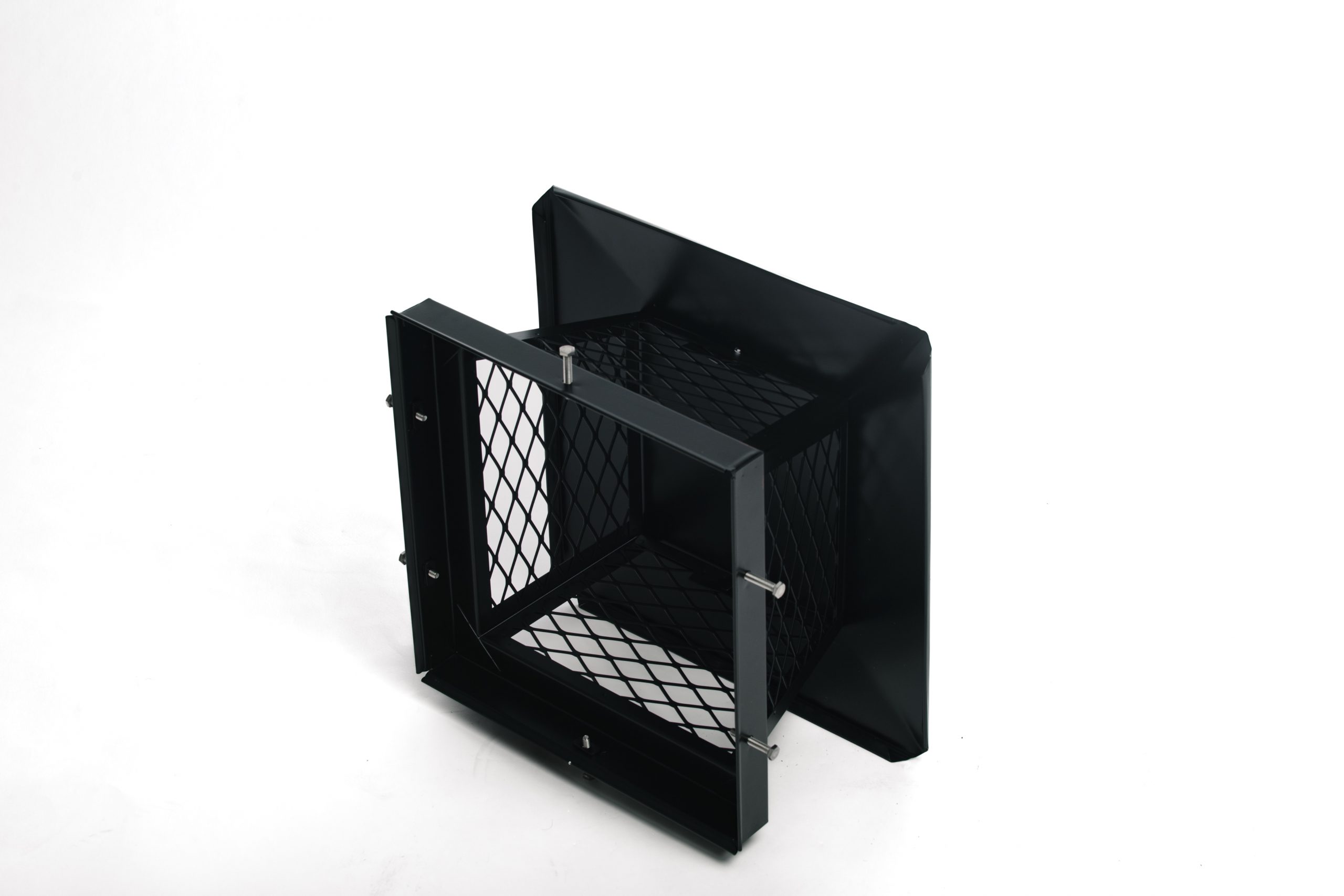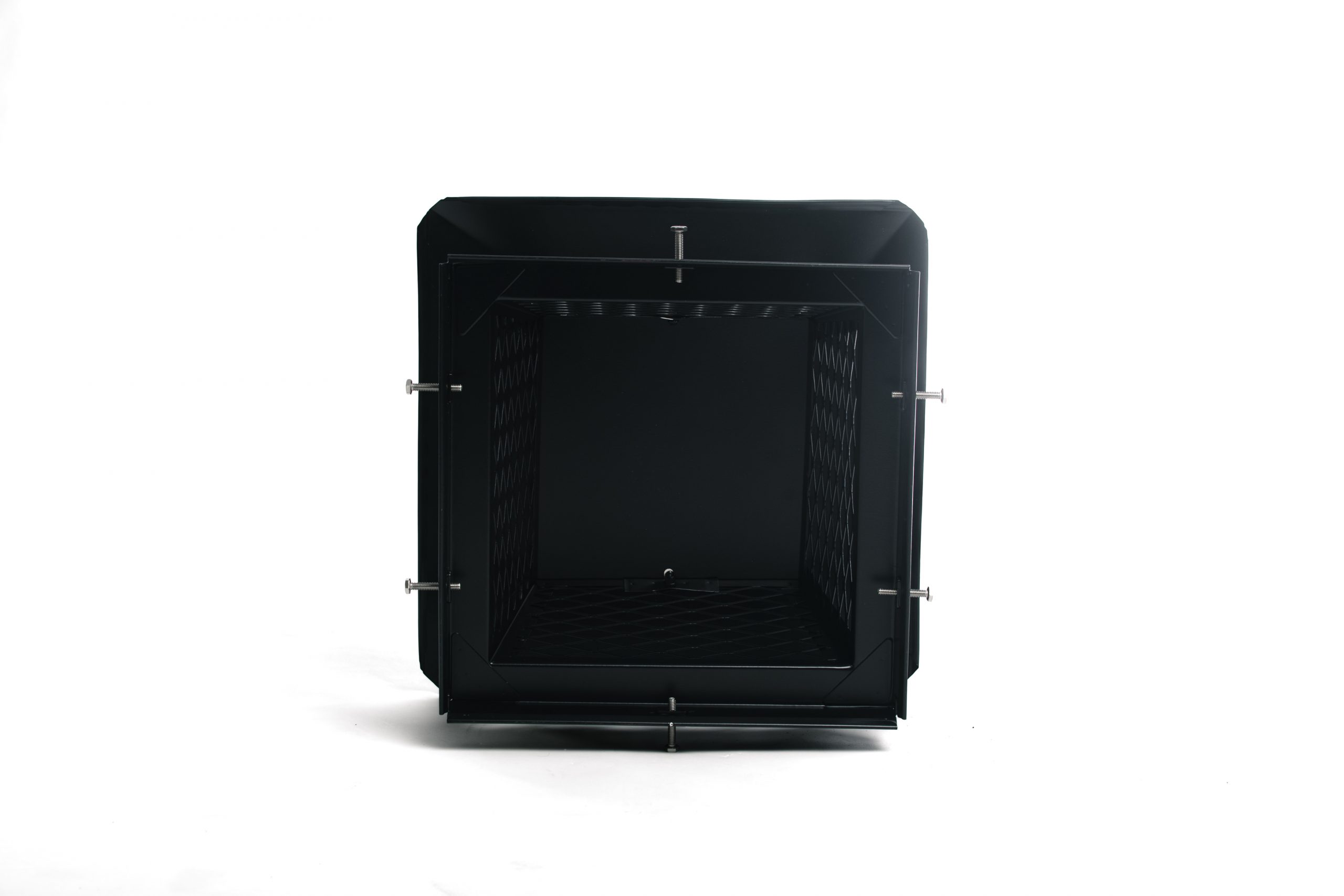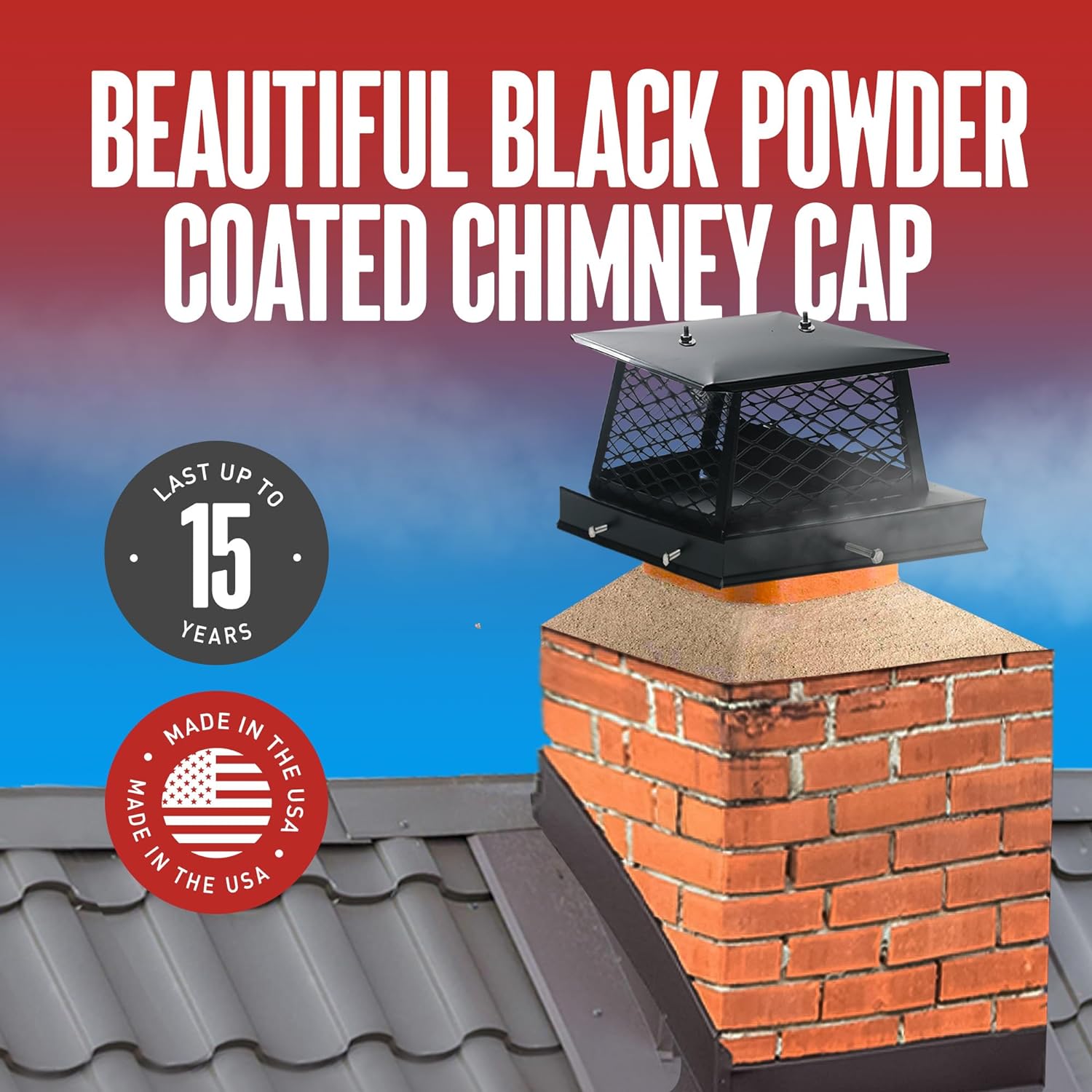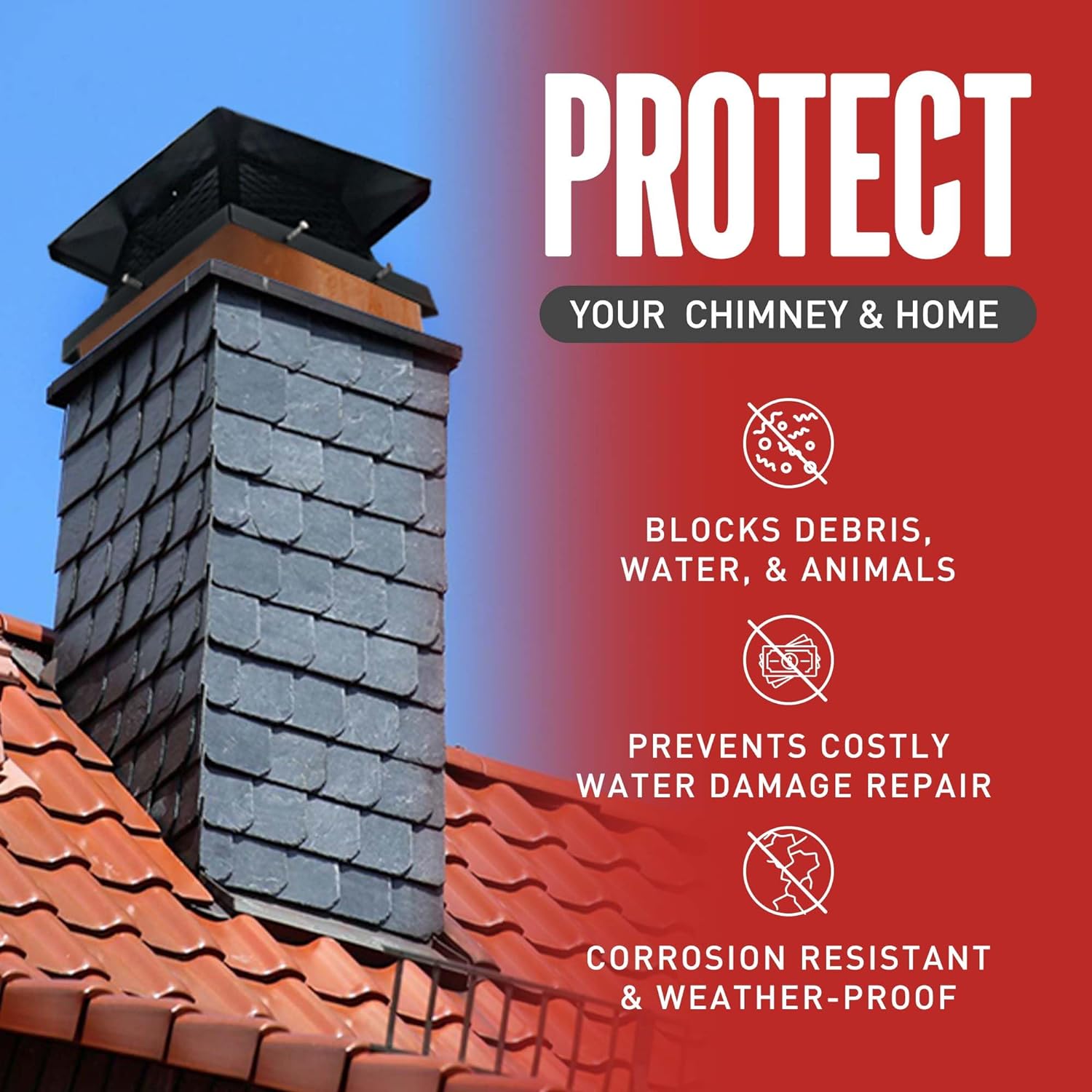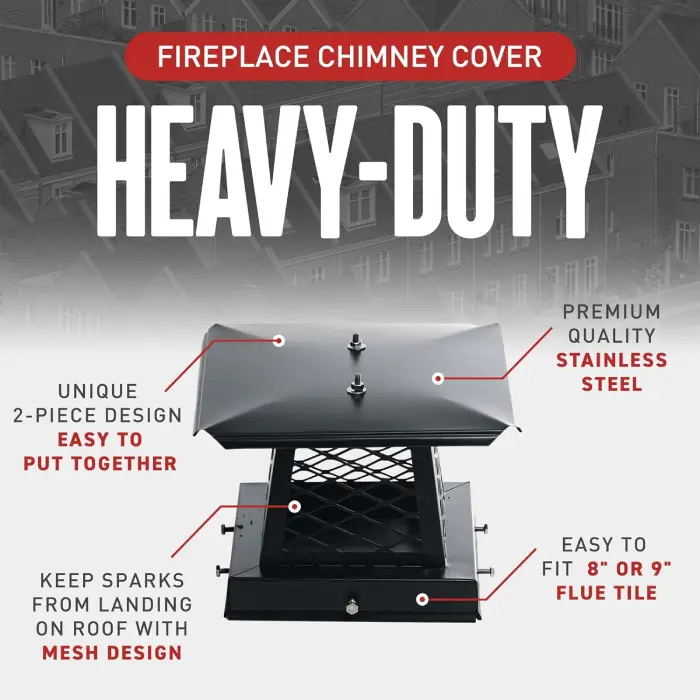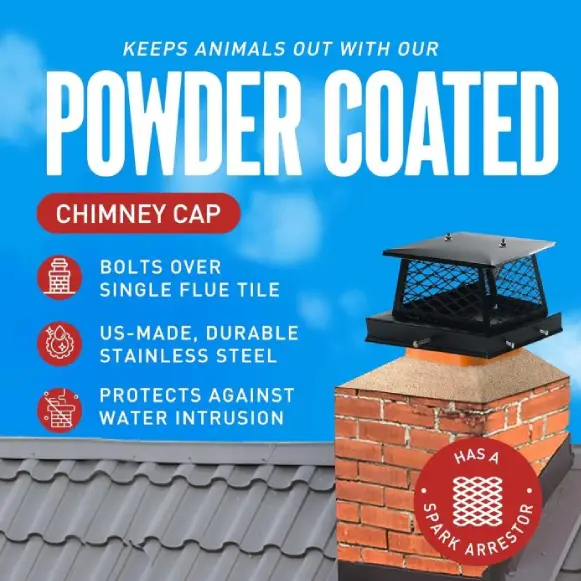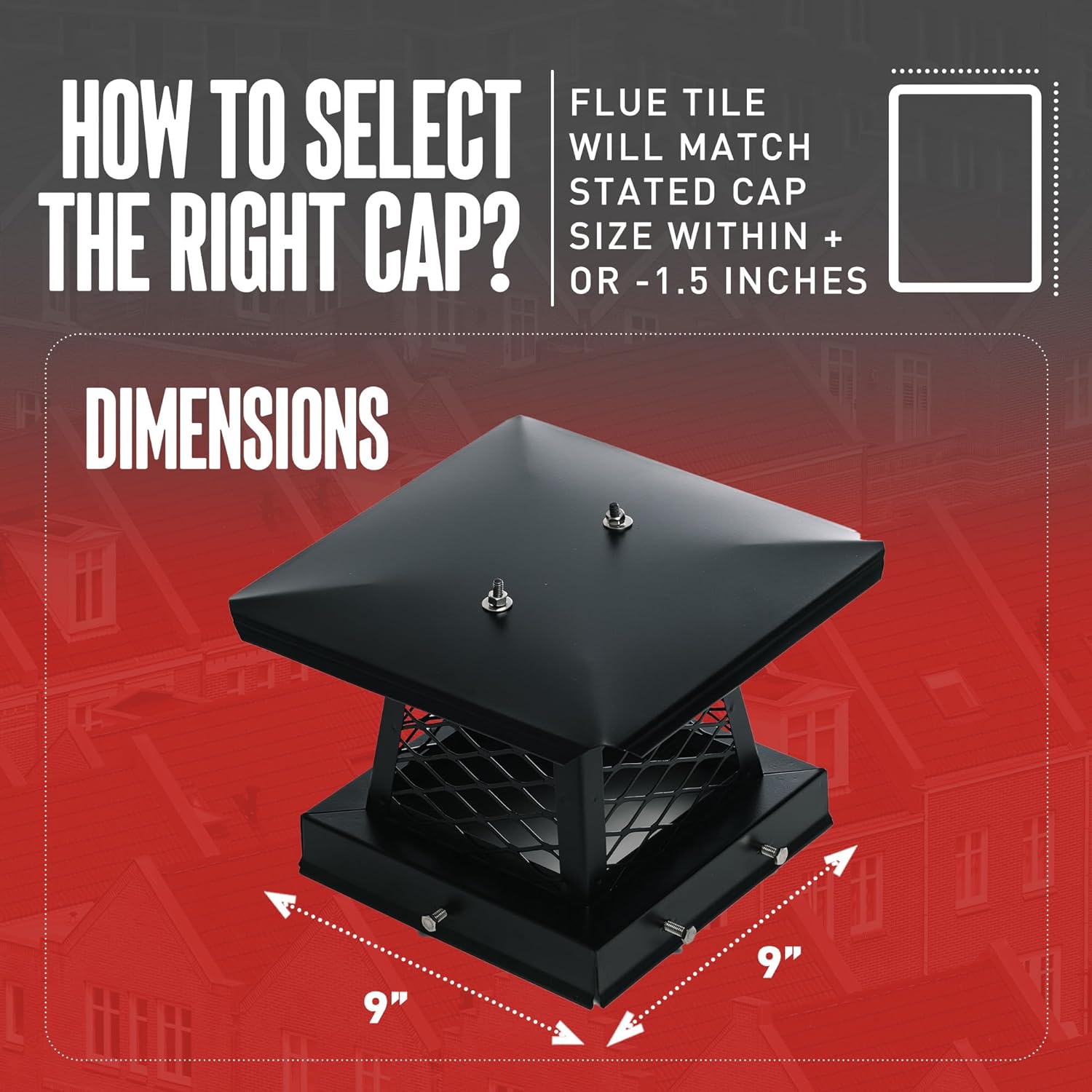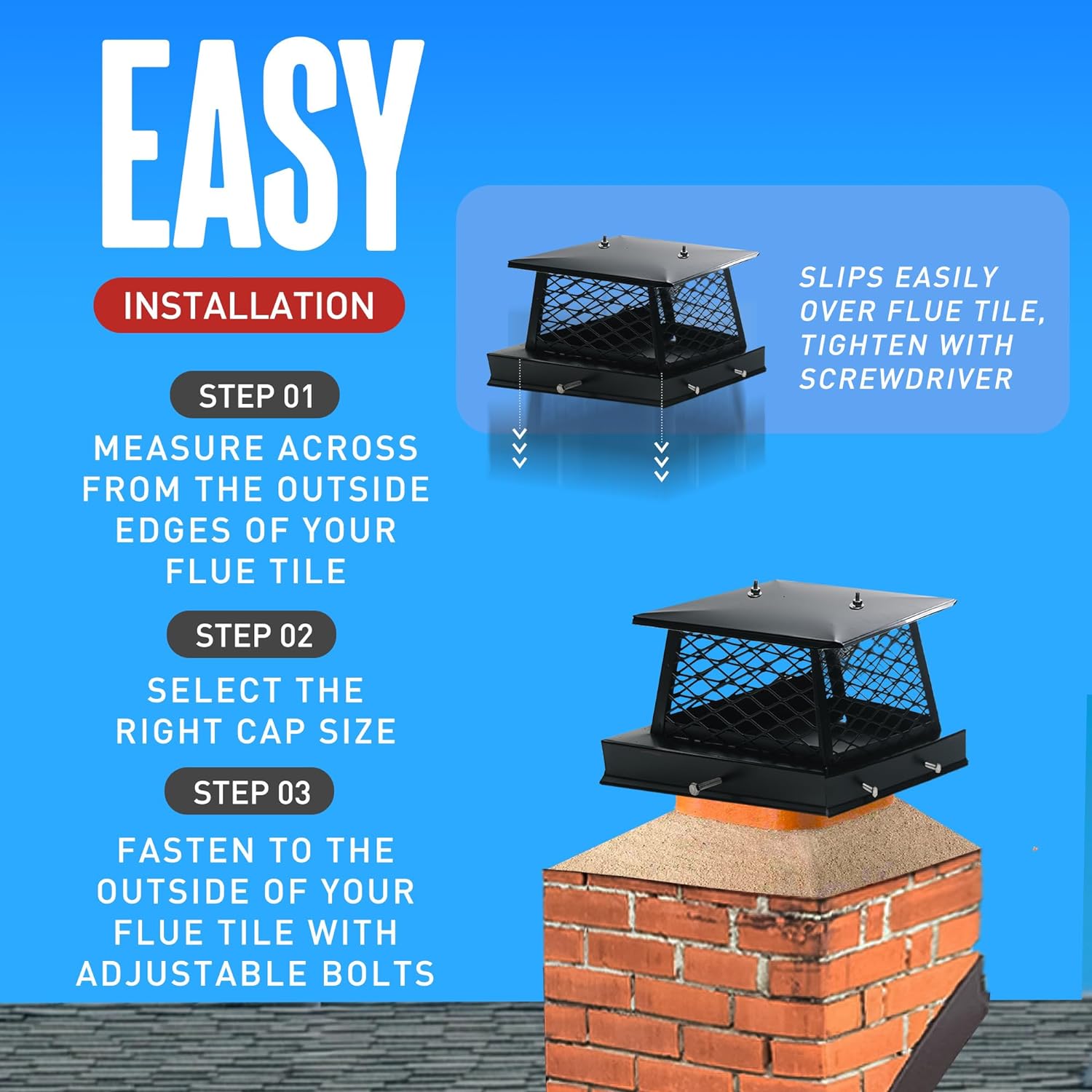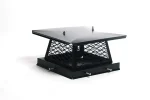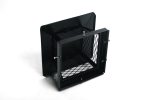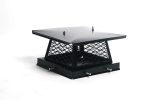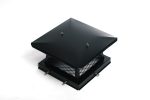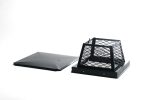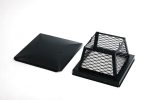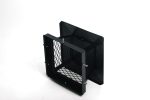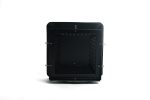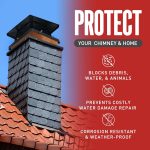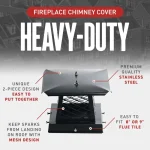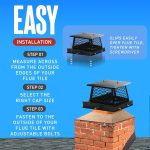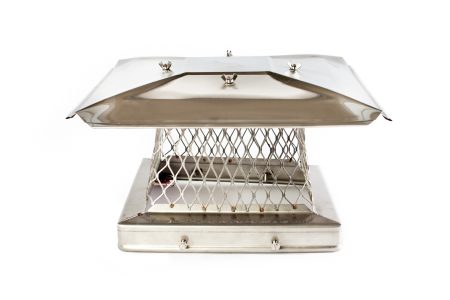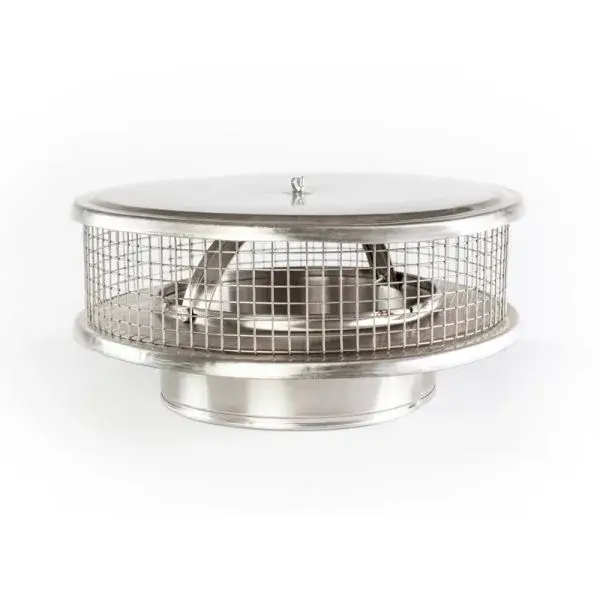
Non Air Cooled Single Wall Chimney Caps
$190.00 – $425.00
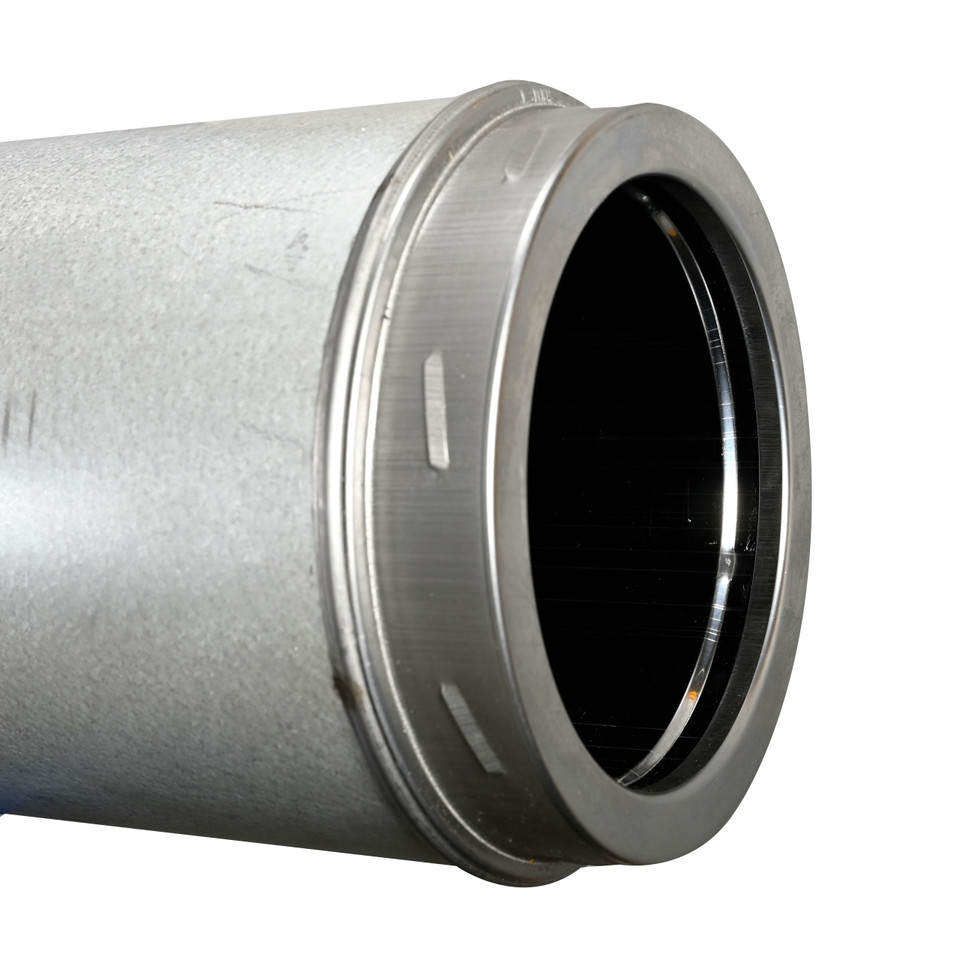
Single-Wall Chimney Caps – Everything You Need to Know
If you have a single-wall metal chimney, adding a chimney cap isn’t just a nice-to-have—it’s a must. These caps do a lot more than just sit on top of your flue. They protect your chimney, boost its performance, and help keep your home safe and comfortable. Let’s dive into what makes single-wall chimney caps so important.
What Makes a Single-Wall Chimney Cap So Useful?
1. Keeps Moisture Out: Rain, snow, and even morning dew can make their way into an uncapped chimney. Over time, this moisture can lead to rust, corrosion, and deterioration of the flue lining or stove pipe. That’s where a chimney cap steps in—it acts like an umbrella for your chimney, keeping the inside dry and extending its life.
2. Stops Animals and Debris: Nobody wants a bird or squirrel making a home in their chimney. It’s not just annoying—it’s dangerous. Nests and debris can block the flue, trap harmful gases, or even cause a fire. A chimney cap with a mesh screen blocks animals, leaves, and twigs from getting inside, keeping everything flowing the way it should.
3. Helps Prevent Roof Fires: When a fire is burning, hot embers can shoot up through the chimney. If they land on your roof or in dry grass nearby, it could spark a fire. A chimney cap acts like a spark guard, catching those stray embers before they become a problem. It’s an easy way to add another layer of safety.
4. Cuts Down on Downdrafts: Ever feel a chilly breeze coming from your fireplace? That’s likely a downdraft. Wind blowing across the chimney opening can push cold air right into your living space. A chimney cap helps block that wind, keeping your home warmer and your energy bills lower.
Anatomy of a Single-Wall Chimney
This illustration shows how each part of a single-wall chimney works together to keep your fireplace safe and efficient:
- Non Air-Cooled Single Wall Chimney Cap: Sits at the very top, shielding the chimney from rain, snow, animals, and debris. It also helps contain sparks, reducing fire hazards.
- Chimney Crown: A protective concrete or metal layer that seals off the top of the chimney and directs water away from the flue opening.
- Flue: The inner passage that carries smoke, gases, and heat safely up and out of your home.
- Chimney Wall: The structural outer shell made of brick or stone that surrounds the flue and provides insulation and strength.
- Smoke Chamber: Positioned just above the firebox, this funnel-like space compresses smoke and gases, guiding them smoothly into the flue.
- Firebox: The main chamber where the fire is built and burns—this is the source of warmth and ambiance in your home.
Each part plays a vital role, and a quality chimney cap ensures the entire system performs at its best.
Tips for Installing Your Chimney Cap
Getting the right fit is key. Single-wall chimney caps are made to slide right into the opening of your chimney pipe. To find the right size, measure the inside diameter of your flue. Some caps use clamps, while others need screws to hold them in place. If you’re unsure, don’t guess—ask a chimney pro for help to avoid any costly mistakes.
Easy Maintenance Goes a Long Way
- Check It Seasonally: Give your cap a quick inspection in the spring and fall. Look for rust, dents, or blockages.
- Keep It Clean: Creosote buildup or trapped debris can block airflow. Clean off anything that’s built up so your chimney can breathe.
- Replace When Needed: A cracked or damaged cap can’t do its job. If you spot damage, swap it out sooner rather than later.
FAQS
Single-wall (or single-flue) chimney caps are standard chimney caps that are designed for single-wall metal chimneys (chimneys that are made up entirely of a rigid metal tube).
Unlike chimney caps that bolt directly to the flue or chimney crown, these single-wall chimney caps slip right inside the flue’s opening (the interior pipe). To ensure a proper fit, measure the inside diameter of both the center pipe and the outside pipe.
If your home has a single-wall or solid-pack metal chimney, a single-wall chimney cap is a great choice to prevent water penetration, keep animals and debris out, and protect from damage.
These chimney caps are meant for single-wall / solid-pack chimneys only.
To get the correct size, measure the inside diameter of the center pipe and the outside!

Final Thoughts
A single-wall chimney cap may be small, but it plays a big role in keeping your home safe and your chimney in great shape. It helps block moisture, keeps animals and debris out, prevents sparks from flying, and reduces annoying downdrafts. In short—it’s a smart, simple upgrade that gives you peace of mind every time you light a fire.
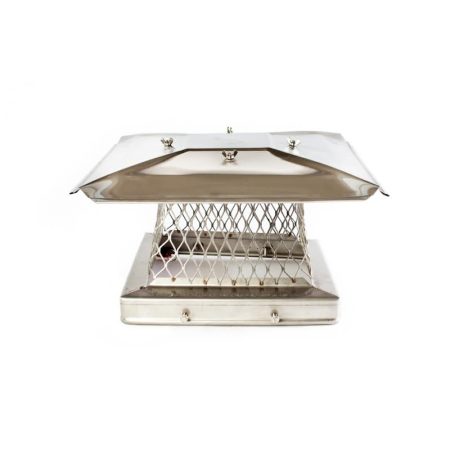
Black Chimney Caps
$229.00 – $349.00
- High Quality – Chimney cap is powder-coated black for this nice sleek look. Made of high-quality steel for durability and extended rust protection.
- Protection – These chimney caps will keep the rain from coming down inside your chimney. Rain is what leads to costly chimney repair. The caps design with the screen will keep out birds, debris, and other animals from nesting inside your chimney
- Installation – Easy installation with bolts that will tighten around your terracotta flue tile
- Safety – Cap is designed as a spark arrestor chimney cap that will help prevent large embers and sparks from landing on your roof
- USA Made – Support the United States business. Don’t buy Chinese-made caps that are inferior!
Protect Your Home While Enhancing Its Look
We’ve been manufacturing chimney caps since 1997, and one thing we’ve noticed – homeowners tend to overlook their chimneys until problems arise. A quality black chimney cap isn’t just an accessory; it’s essential protection that also happens to look great.
Our black caps have become bestsellers because they solve real problems: they keep rain from destroying your mortar, prevent squirrels from nesting in your flue, and add a finished look to your roofline. And unlike those glossy stainless steel caps that stick out like a sore thumb, black blends seamlessly with most roof designs....
Got questions about which cap fits your chimney? You’re not alone. Read on for everything you need to know before making this smart home investment.
Why Your Chimney Deserves a Cap
After 25+ years in this business, we’ve seen the damage an unprotected chimney can suffer. During heavy rains last year, we received dozens of calls from homeowners with water leaking into their living rooms. The culprit? Uncapped chimneys.
Your chimney is basically a hole in your roof – one that needs proper covering. A cap serves as your first defense by:
- Stopping water from entering and damaging your chimney’s interior
- Blocking animals looking for a cozy home (removing a raccoon nest costs about $300-500!)
- Preventing leaves and debris from creating dangerous blockages
- Reducing downdrafts that push smoke back into your home
We recently helped a customer in Portland whose uncapped chimney had developed severe mortar damage from just three years of rain exposure. The repair cost: $1,800. His new $230 cap would have prevented the entire problem.
What Makes Black Caps Special
“Will a black cap match my house?” I swear, at least 5 customers ask us this every week. Quick answer: yep, pretty much always. After selling these since ’97, we’ve noticed patterns in what sells and why:
Black caps disappear against your roofline. While copper caps can be beautiful (and pricey), they draw attention. Our matte black finish simply blends with your roof, letting other architectural elements take center stage.
The powder-coating isn’t just making it pretty. We learned this lesson back in ’08 when we tried selling plain steel caps in Maine – total disaster! By month six, customers were calling about rust spots. Now we bake that black coating on thick. It shields against rain, blocks moisture from seeping in. Ask any of our Gulf Coast customers – they’ll tell you how salt air eats metal alive if it’s not protected right.
Something we discovered by accident – up in Minnesota and Wisconsin, folks with black caps report better drafting in winter. Makes sense physically – dark stuff soaks up sun. This extra warmth can improve your draft, reducing the likelihood of smoke backing up into your home and helping prevent damaging creosote buildup.
Finding Your Perfect Cap Style
We broke all our caps into three main categories to make selection easier:
Single-Flue Caps work for most homes with one chimney flue. They’re straightforward, effective, and our most economical option. Our most popular sizes are 9″x13″ and 13″x13″, but we stock unusual sizes too.
Outside Mount Caps cover your entire chimney crown, not just the flue. These are ideal if you have multiple flues or if your chimney crown is starting to show wear. They extend down the sides for maximum protection against moisture.
Custom Hip and Ridge Caps bring architectural flair along with function. Got one of those houses with character? Dan in our design shop loves a challenge. Last month he built a cap for an 1890s Victorian in Charleston – added these little flourishes that matched the iron fence below. Customer sent us cookies afterward! We’ve created everything from Victorian-inspired designs to sleek modern caps for contemporary homes.
Not sure which type your chimney needs? Send us a quick photo through our website, and we’ll recommend the right solution.
Measuring for the Perfect Fit
Getting the wrong size is the #1 mistake homeowners make when ordering chimney caps. Here’s our simple 3-step measurement guide:
Climb up (safely!) and measure the OUTSIDE dimensions of your terracotta flue tile
Add 3-4 inches to both measurements to ensure proper overhang
Double-check by measuring in two places, as flues aren’t always perfectly square
If you’re not comfortable on the roof, snap a photo with a tape measure visible next to your flue, and email it to us. We can usually determine the proper size from a clear photo.
For multi-flue chimneys, measure the entire outside perimeter where you want the cap to sit. These almost always require custom sizing, which we handle at no extra charge.
DIY Installation Made Simple
About 75% of our customers install their own caps. Most tell us it took under 30 minutes, using tools they already had. You’ll need:
- A ladder tall enough to safely reach your roof
- A socket wrench
- Possibly a screwdriver (depending on your cap model)
- A second person to help steady the ladder (recommended)
Safety first: If you’re not comfortable with heights or don’t have proper equipment, hire a professional. The $100-200 installation fee is worth your safety.
The actual installation process is straightforward:
- Clear any debris from your flue
- Center the cap over your flue tile
- Tighten the mounting bolts until snug – but don’t overtighten, which can crack terra cotta
Pro tip: Apply a small amount of silicone caulk around the flue before installing for an extra weather-tight seal in extremely rainy areas.
Keeping Your Cap in Top Shape
Once installed, our caps need very little maintenance, but these simple checks will extend your cap’s life considerably:
After major storms or high winds, take a look to make sure your cap is still properly secured. A quick tightening of loose bolts prevents bigger problems.
During your annual chimney cleaning (you do get that done, right?), ask your sweep to check the mesh screens for creosote buildup or debris.
For coastal homes, where salt air is particularly harsh, a quick rinse with fresh water twice a year helps remove salt buildup that can corrode metal over time.
Most of our caps last 10-15 years with minimal care. Truth time: that pitch-black finish eventually lightens up a bit. We see it mostly in Arizona and Florida after about 5 years of baking in that sunshine. Just turns slightly grayish. Works exactly the same though – purely cosmetic.
Stuff People Mess Up (We See It All The Time)
Our customer service team reports these frequent issues that are easily avoided:
Wrong measurements: Always measure the outside dimensions of your flue, not the inside. When in doubt, call us before ordering.
Ignoring multi-flue configurations: If you have more than one flue, an outside mount cap is almost always the better option, even though it costs a bit more.
Forgetting about height clearance: Your cap needs to extend at least 5 inches above the flue for proper draft. Our standard designs account for this, but custom situations sometimes require adjustments.
Skipping the chimney inspection: If your chimney hasn’t been inspected recently, do this before installing a new cap. Capping a damaged chimney can hide bigger problems.
Is The Investment Worth It?
A quality black chimney cap typically runs between $230-$350 depending on size and style. Custom designs can go higher. When customers ask if it’s worth it, we point to these facts:
The average water damage repair to chimney masonry starts at $1,000
Animal removal services typically charge $200-$500, plus the cost of repairs
Most homeowner insurance policies don’t cover damage from neglected maintenance
Our caps are manufactured in Portland using heavy-gauge stainless steel with proper welding techniques. We’ve seen imported caps rust through in under two years, while ours typically last a decade or more.
The Bottom Line on Black Chimney Caps
After selling thousands of caps over 25+ years, we’ve learned that black chimney caps hit the sweet spot of protection, appearance, and value. They’re the unsung heroes of home maintenance – not flashy, but quietly saving you money and headaches year after year.
Whether you’re replacing an old cap or finally adding one to an unprotected chimney, going with black is a choice you won’t regret. Have more questions? Pick up the phone and ask for Mike or Brenda – they’ve been fitting caps longer than my kids have been alive. 503-300-1926. No automated menu garbage, promise.
| Weight | 8 lbs |
|---|---|
| Dimensions | 25 × 25 × 14 in |
| Sizes |
9” x 9” ,9” x 13” ,9” x 17” ,13” x 13” ,13” x 17” ,15” x 15” ,18” x 18” |
Related products
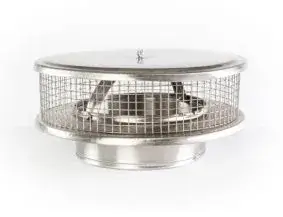
12″ round non air-cooled chimney cap
$425.00
8″ round air-cooled chimney cap
$399.00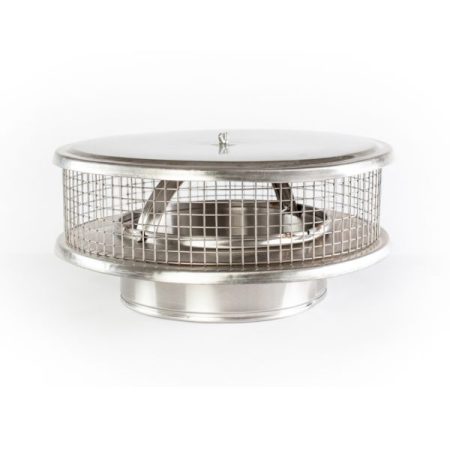
8″ round non air-cooled chimney cap
$280.00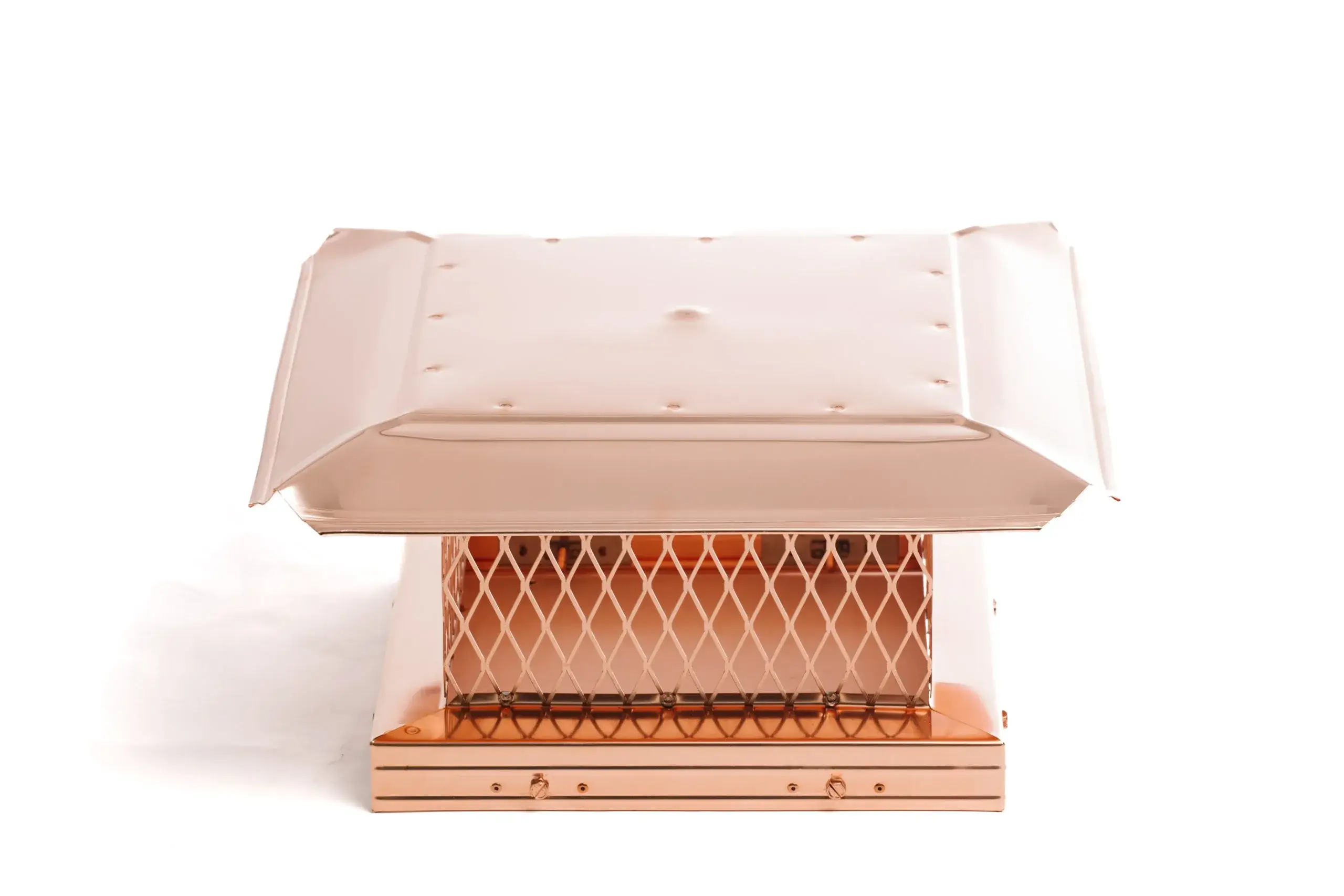
Copper Chimney Caps
$625.00 – $1,176.00
Non Air Cooled Single Wall Chimney Caps
$190.00 – $425.00
Stainless Steel Chimney Caps
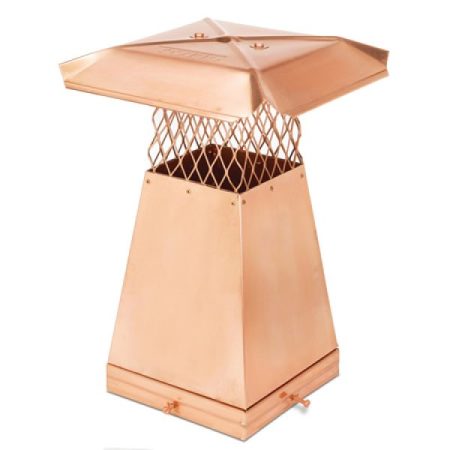
Tall Copper Flue Stretcher
$650.00 – $1,575.00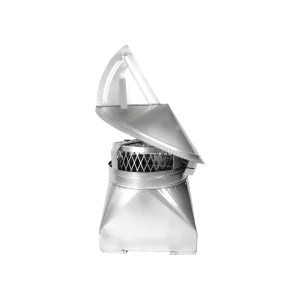

 We Ship Anywhere USA & Canada
We Ship Anywhere USA & Canada



